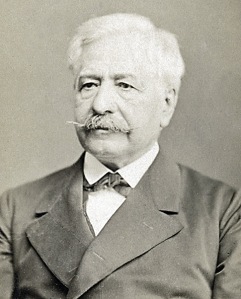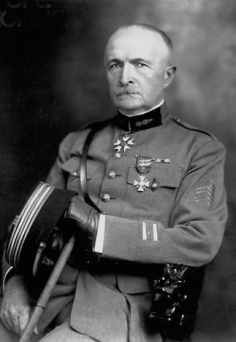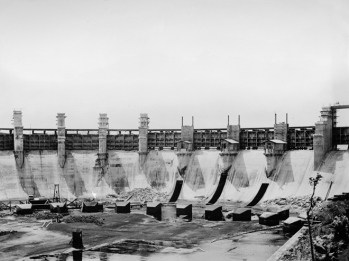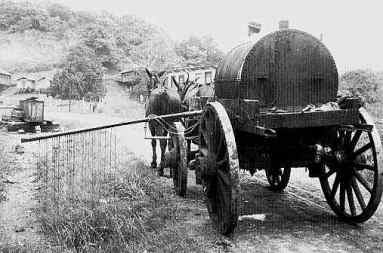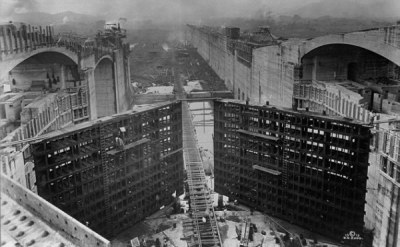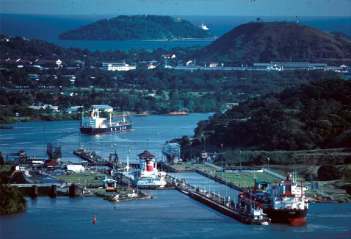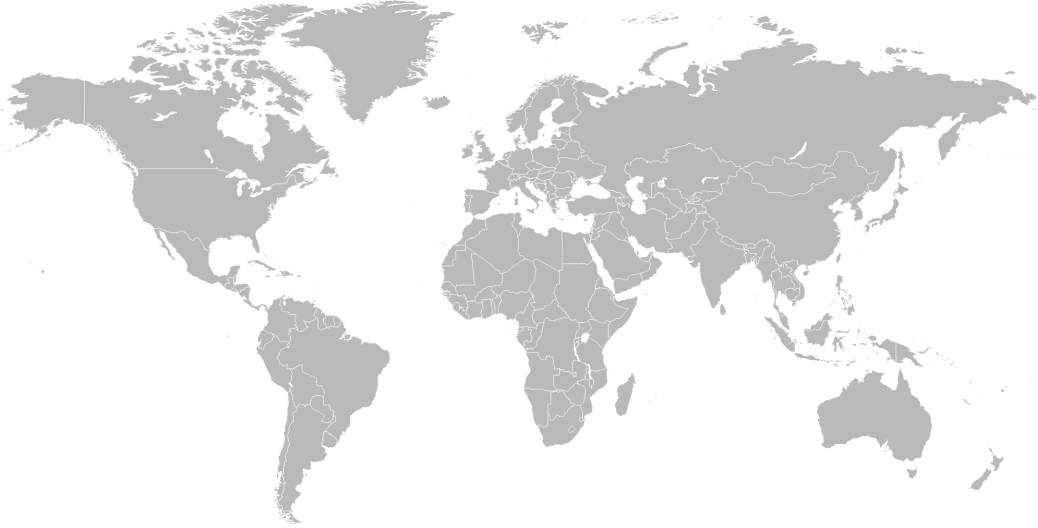By F.E. Chavez | @drchafe
Introduction
The Panama Canal celebrates one hundred years of operation today, August 15, 2014. I couldn’t think of a better way to start out this blog than by writing about it, as well as the impact it had on me in my personal story.
History
The idea of an Anglo-American canal, one that would allow American and British industrialist ship their goods affordably across the globe, was already palpable in the mid 1800’s. Initially, the inception of such canal came into focus around 1850. Negotiations spawned between two nations, US and Britain, both who had common interest and which gave rise to the Clayton-Bulwer Treaty. This treaty proposed a plan to build a canal through the Republic of Nicaragua (a less politically volatile nation at the time), for the purposes of opening alternative waterways to cut time and expense. Unfortunately, this idea of a trans-isthmian canal never went past the planning stages.
French Attempt
The French, having completed the Suez Canal in 1869, felt apt to be able to carry out such an engineering feat. With great support from Paris, as well as other private funding, the first French Canal Company began excavating in 1881 under the leadership of Ferdinand de Lesseps. However, insufficient planning, geological, environmental and financial challenges became too big to ignore. By 1889 the French Company had already run-out of money and then, in 1894, they suspended the construction.
US Acquisition and the Independence of Panama from Colombia
The United States of America was still interested in building a canal. The US, noticing a great potential for the canal to go through the Isthmus of Panama, entered negotiations with France and Colombia (Panama was a province of Colombia), giving birth to the Hay-Herran Treaty. However, this treaty was rejected by the Colombian legislature. Panamanian born rebels, angered and upset by the move of Colombia and with the independence zeitgeist perceivable, allowed the United States to reposition their strategy.
In great part, orchestrated and brokered by French born Philippe Bunau-Varilla, Panamanian separatists quickly declared their independence and became temporary beneficiaries of the US monetarily and militarily. This move allowed Panamanian separatists to benefit from the protection of US warships guarding isthmian waters so the Colombian army would not thwart the independence efforts. It is safe to say that the Panama Canal, to us Panamanians, amplified the inevitable independence from Colombia.
US Construction
As part of the Hay-Bunau-Varilla Treaty (controversial in Panamanian History), the US took control of the Panama Canal Zone area and the administration of the Panama Canal, indefinitely. This area included all the surrounding land near the finished Panama Canal structure. The move by the US to carry out operations in the manner it did, enhanced on the colonialist moniker it had around that era and righteously so.
After obtaining full power of the construction project, the US Company did not have a finalized plan as of how to go about building the canal. Internal administrative conflicts arose and tensions grew in regards to the bureaucracy of the Isthmian Canal Commission (ICC). The topics of concern were to either create a sea level canal, or implement a more expensive lock system. Moreover, having taken over some of the antiquated French equipment and given the history of the brutal environment around the construction area. There were challenges that needed to be met.
In the end, decision came down to build a lock system with the creation of the biggest dam and the biggest artificial lake at the time. The Gatun Lake and Gatun Dam. The Gatun Lake (above sea level) would supply the water required to fill a set of locks by using valves and gravity to allow the flow of water to fill the chambers of each lock. This action would, in turn, raise the vessel above sea level and allow it to navigate thought the entire isthmus, so it could then be lowered back to sea level at the other side and into an entire different ocean.
Locks would be required on both sides of the isthmus, the Atlantic as well as the Pacific side. This path was much more expensive than anticipated, yet needed in order to succeed.
President Theodore Roosevelt appointed the U.S. Army Corps of Engineers to take over the helm of the construction project. However, the problems that the French experienced earlier were not gone and still were in need of being addressed. The problems ranged from housing and disease to the approach of how to go about building the canal once the design was finalized.
Health Measures
The construction of the canal caused countless human casualties through accident and disease. Such diseases like yellow fever and malaria, along with accidents, cost tens of thousands of human lives. What was once thought to be a conquerable challenge had now become a tedious task. Plagued by some of the most expensive setbacks, in human resource, by both French and American efforts combined.
Studies from a Cuban born physician, Dr. Carlos Finlay, around the 1870’s were taken into consideration. Doctor Finlay theorized that; the spread communicable diseases such as yellow fever and malaria, were in fact, carried out by biological vectors such as mosquitoes carrying the disease. The spread of these diseases needed to be contained, so he proposed a solution to the problem: control the mosquito population.
Dr. Walter Reed was appointed his own commission during the construction of the canal. He confirmed the recommendations set forth by Dr. Carlos Finlay years earlier. The appointment of Dr. William C. Gorgas to become the Chief Sanitation Officer was appropriate since he supervised and implemented techniques outlined by Dr. Finlay. This, in turn, would help abate further infections. To the surprise of many, the method worked and conditions exponentially improved from that moment on, epidemiologically speaking.
Segmentation
The U.S. Army Corps of Engineers sent George Washington Goethals to direct the work of the Panama Canal Project. Coronel Goethals divided the construction of the canal into segments: the Atlantic, the Central and the Pacific excavations. This decision and approach was one of the last big adjustments made during the building of the canal and it yielded constant progress until it was completed.
The Panama Canal Completed
Once the Panama Canal was completed, it marked the biggest man made achievement of that era. Many considered it an engineering marvel and some went on to call it The 8th Wonder of the World. Aside from the structure itself, the total creation of this project included, to name a few: two man-made lakes, four dams, the Culebra Cut and three different lock systems. Other lakes, such as Alajuelas and the Madden dam, were also constructed.
Upon opening in August 15, 1914, the SS Ancon was the first vessel to enter the marvelous creation. The Panama Canal went on to become one of the most transited waterway venues of the 20th century. Currently, there is an expansion underway. In reality, it is not an expansion, although deemed such, but it is more of a new canal which is being built. The construction is of new locks, with new technology as well as being bigger in size, to accommodate ships post-Panamax standards.
My Personal Story in the Canal Zone
For a portion of my early life and up to the age of fifteen, I lived in the Canal Zone area. The area was the township of Balboa and I briefly attended Balboa Elementary School. As I got older, I attended Curundu Junior High School and played football for the Balboa Red Machines (Number 40), all considered Canal Zone. This all took place when the administration of the Panama Canal was still under US jurisdiction.
The view, from my backyard, was of iconic Ancon Hill, which was also part of the Canal Zone. On top of that same hill, to this day, flies an enormous Panamanian flag and is visible from many sectors of the metropolitan city. And yes, as you may have guessed, the hill was named after the first ship (SS Ancon) that ever passed through the canal.
I would see wild animals in my back yard every morning before school. At times, a cool morning mist with amber sunrays filtering through tree leaves barely lighting up the back yard. The atmosphere and energy in that area was an amazing one. To this very day, as I pass through, an almost unpalatable sensation of nostalgia overwhelms me. I have more great memories from that part of my life, than I’ve had in different stages of my life now. It is safe to say that it shaped me and made who I am today.
Credit to the Heroes
Today, the Panama Canal turns 100 years old. The conceptual idea of building a canal through the beautiful Isthmus of Panama was a far-reaching goal. The engineers and workers who made it possible, although some of them not here, will also celebrate their work today in the heavens. This project was an international collaborative effort and we give everyone involved a well deserved standing ovation.
However, there is another side to the coin for us Panamanians. The construction of the canal also functioned as a pacemaker for the country itself. Mentally setting the tone for all Panamanian citizens to stand up against injustice. Whether domestic or foreign, whenever the need be, just like we have always done in the past.
It brought out the passion of many Panamanians before me. These individuals envisioned the possibility of, one day, the Republic of Panama finally being free of foreign influence. Some gave up their lives for a cause they passionately believed in. Because of such bravery and selfless acts, Panama now owes them a well-deserved thank you as we celebrate the centennial anniversary of the canal under a Panamanian administration.
Those same individuals would be happy today to see a brand new canal being built under the direction and leadership of their people. Now, more than ever, they would also be proud to see that us Panamanians have become masters of our own destiny and we are writing our own future.
Happy 100th Anniversary to the Panama Canal, may you see one hundred more and beyond.

